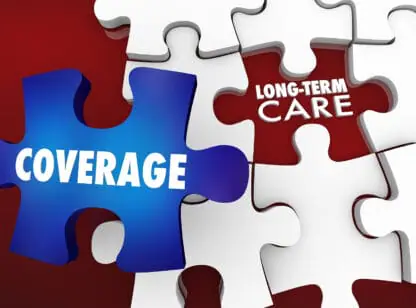The holidays are here. Time to gather with friends and family to give thanks for the many blessings in our lives. But shouldn’t every day be thanks-giving? Science says yes, because gratitude is the secret to good health and happiness.
Some of you are smiling as you read this, because you have known this for years and practice gratitude daily. Others may be skeptical about the simplicity of this statement which is apropos, because living your life with gratitude is no simple task. It takes practice, but once you’ve accomplished the mindset, you will reap the many physical, mental and social benefits that are indeed scientifically proven.
Numerous studies show that grateful people have stronger immune systems, are less bothered by aches and pains, sleep better, have lower blood pressure and generally take better care of their health. They are found to be more alert, alive, and awake, and have higher levels of positive emotions. They are more forgiving, generous, and compassionate, and feel less lonely and isolated. Research also suggests these benefits are available to most anyone who practices gratitude, even in the midst of adversity and when coping with chronic disease.
So what does being a truly grateful person mean? Robert A. Emmons, Ph.D., considered by many to be the world’s leading experts on gratitude, says there are two components to gratitude. First, it’s an affirmation of goodness. We affirm that there are good things in the world, gifts and benefits we’ve received. “This doesn’t mean life is perfect; it doesn’t ignore the burdens and hassles. But when we look at life as a whole, gratitude encourages us to identify some amount of goodness in our life.” The second part of gratitude is recognizing that the sources of this goodness are outside of ourselves, as opposed to being from our individual accomplishments. “We can appreciate positive traits in ourselves, but I think true gratitude involves a humble dependence on others, an acknowledgement that other people—or even higher powers, if you’re of a spiritual mindset—have given us many gifts, big and small, to help us achieve the goodness in our lives.”
In his book Thanks! How the New Science of Gratitude Can Make You Happier, Emmons emphasizes the social dimension of gratitude. He sees it as a relationship-strengthening emotion because it requires us to see how we’ve been supported and affirmed by others, and to not only appreciate their gifts, but to repay them or pay it forward.
For the past decade, Emmons and his team have studied over a thousand individuals from ages 8 – 80, helping them to systematically cultivate gratitude and documenting the transformative effects on their lives. He summarizes key results as such:
Gratitude allows us to celebrate the present. It magnifies positive emotions. Our emotional systems like newness and change and positive emotions wear off quickly. We adapt to positive life circumstances so that before too long, the new car, the new spouse, the new house don’t feel so new and exciting anymore. But gratitude makes us appreciate the value of something, and when we appreciate the value of something, we extract more benefits from it and are less likely to take it for granted.
Gratitude blocks toxic, negative emotions. Envy, resentment, and regret are emotions that can destroy our happiness. There’s even recent evidence, including a 2008 study by psychologist Alex Wood in the Journal of Research in Personality, showing that gratitude can reduce the frequency and duration of episodes of depression. This makes sense: You cannot feel envious and grateful at the same time. They’re incompatible feelings. If you’re grateful, you can’t resent someone for having something that you don’t. Those are very different ways of relating to the world.
Grateful people are more stress resistant. There are a number of studies showing that in the face of serious trauma, adversity, and suffering, people who have a grateful disposition recover more quickly. I believe gratitude gives people a perspective from which they can interpret negative life events and help guard themselves against post-traumatic stress and lasting anxiety.
Grateful people have a higher sense of self-worth. When you’re grateful, you have the sense that someone else is looking out for you—someone else has provided for your well-being, or you notice a network of relationships, past and present, of people who are responsible for helping you get to where you are right now.
So how do you get there?
How do you go beyond occasionally feeling grateful to actually becoming a more grateful person? It doesn’t happen with the flick of a switch; it takes awareness and practice.
The first step is to recognize the mindset that may be holding you back. “Practicing gratitude can be at odds with some deeply ingrained psychological tendencies,” says Emmons. One of these is self-serving bias, the belief that when good things happen to us, it’s because of something we did, but when bad things happen, we blame other people or circumstances. “When we’re truly grateful, we give credit to other people for our success. We accomplished some of it ourselves, yes, but we widen our range of attribution to also say, ‘I had teachers, mentors, siblings, peers—other people who assisted me along the way.’ That’s very different from a self-serving bias.”
Entitlement, the feeling that we deserve the good fortune that comes our way, is also self-defeating. “With gratitude comes the realization that we get more than we deserve. If you deserve everything, if you’re entitled to everything, it makes it a lot harder to be grateful for anything.”
And then there is the need for control. “Gratitude goes against our need to feel in control of our environment. Sometimes with gratitude you just have to accept life as it is and be grateful for what you have.”
Practice makes perfect
Most professionals agree that an easy first step in practicing gratitude is to start a daily gratitude journal. Emmons notes that in their studies, this simple concept has delivered overwhelming results in as little as three weeks.
“This practice works because it consciously, intentionally focuses our attention on developing more grateful thinking and on eliminating ungrateful thoughts.” He adds that with a gratitude journal, we start to see the gifts in our life as new and exciting. Other practices Emmons recommends include:
Remember the Bad. To be grateful in your current state, it is helpful to remember the hard times that you once experienced. When you remember how difficult life used to be and how far you have come, you set up an explicit contrast in your mind, and this contrast is fertile ground for gratefulness.
Make a Vow to Practice Gratitude. Research shows that taking an oath to perform a behavior increases the likelihood that the action will be executed. Therefore, write your own gratitude vow, which could be as simple as “I vow to count my blessings each day,” and post it somewhere where you will be reminded of it every day.
Engage Your Senses. Through our senses—the ability to touch, see, smell, taste, and hear—we gain an appreciation of what it means to be human and of what an incredible miracle it is to be alive. Seen through the lens of gratitude, the human body is not only a miraculous construction, but also a gift.
Use Visual Reminders. Because the two primary obstacles to gratefulness are forgetfulness and a lack of mindful awareness, visual reminders can serve as cues to trigger thoughts of gratitude. Often times, the best visual reminders are other people.
Watch Your Language. Grateful people have a particular linguistic style that uses the language of gifts, givers, blessings, blessed, fortune, fortunate, and abundance. In gratitude, you should not focus on how inherently good you are, but rather on the inherently good things that others have done on your behalf.
Go Through the Motions. If you go through grateful motions – smiling, saying thank you, and sending written words of thanks – the emotion of gratitude should be triggered.
Think Outside the Box. If you want to make the most out of opportunities to flex your gratitude muscles, you must creatively look for new situations and circumstances in which to feel grateful.
More scientific research on this beneficial attribute is underway. The Greater Good Science Center at the University of California, Berkeley—in collaboration with the University of California, Davis—is launching a $5.6 million, three-year project, Expanding the Science and Practice of Gratitude. The goals of this initiative are to expand the scientific database of gratitude in the areas of human health, personal and relational well-being, and developmental science; and to promote evidence-based practices of gratitude in medical, educational, and organizational settings (schools, workplaces, homes and communities); and in doing so to engage the public in a larger cultural conversation about the role of gratitude in civil society.
But it can start with you…becoming aware, practicing gratitude, paying it forward, and making every day thanks-giving. “I do believe that people who live a life of pervasive thankfulness really do experience it differently than people who cheat themselves out of life by not feeling grateful,” says Emmons. “Gratitude allows us to participate more in our life. We notice the positives more, and that magnifies the pleasures you receive from life. Instead of adapting to goodness, we celebrate goodness.”
For an inspirational start, please see “A Good Day” By Brother David Steindl-Rast.
Sources: 1) Greater Good, The Science of a Meaningful Life, University of California – Berkeley; 2) Robert A. Emmons, Ph.D. Thanks! How Practicing Gratitude Can Make You Happier. 2nd ed. (New York: Houghton Mifflin Company, 2008)









































Comments (0)